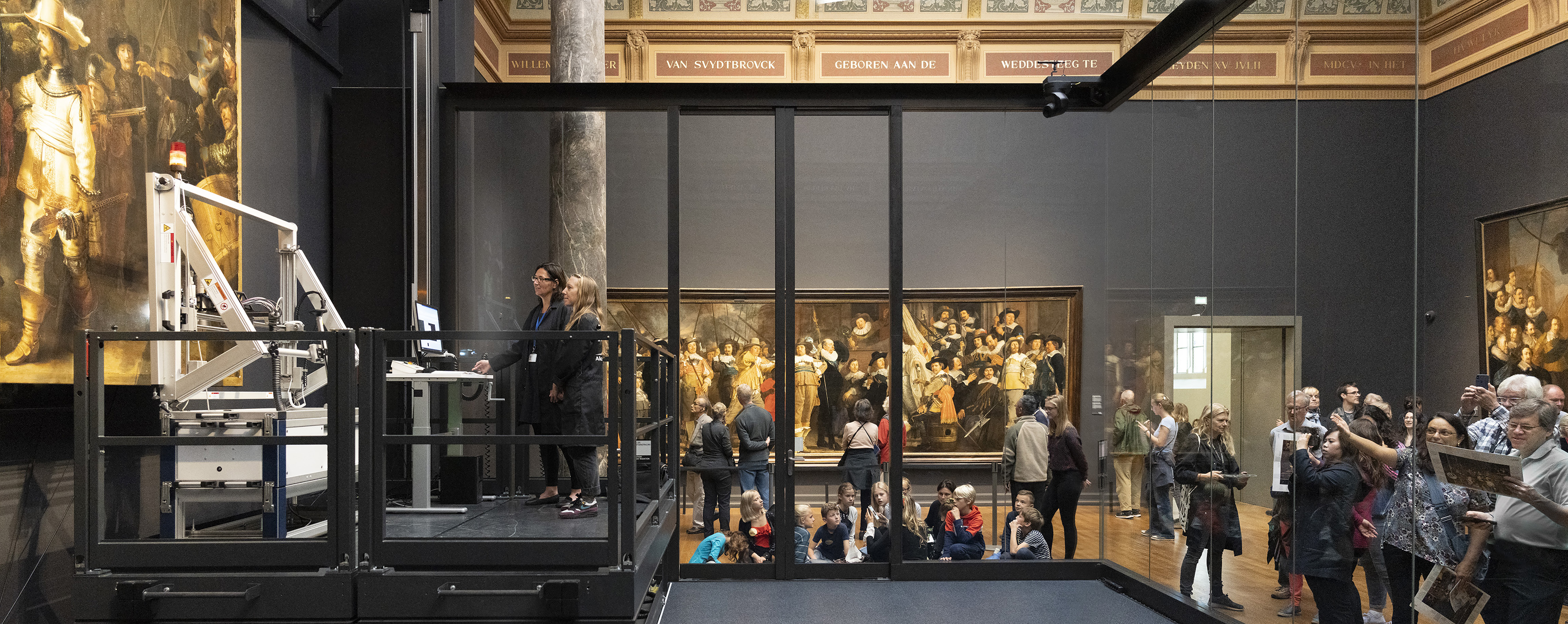
A years-long conservation project undertaken by experts at the Rijksmuseum on the institution’s most famous painting, Rembrandt’s The Night Watch, has revealed a previously unknown preparatory sketch hidden beneath the artist’s beloved masterpiece.
The three-stage project, which involved 30 conservators working over the course of nearly three years, has led to the discovery of several changes the artist made during his painting process.
The museum has now released a “calcium map” of the painting where the picture’s underlying bones—and Rembrandt’s decisions to rearrange them—have come to light.
The Calcium map of Rembrandt’s The Night Watch. Photo courtesy The Rijksmuseum.
“We always suspected Rembrandt must have made a sketch on the canvas before embarking on this incredibly complex composition, but we didn’t have the evidence,” Rijksmuseum director Taco Dibbits said in a statement.
“It is fascinating to see Rembrandt searching for the right composition,” he added. “We have discovered the genesis of The Night Watch.”
On the top right portion of the work, for example, Rembrandt initially imagined an army of spears that he took out of the final composition. He also removed the feathers from militiman Claes van Cruijsbergen’s cap, perhaps because it struck him as a distraction.
Rembrandt sketched more spears than he painted in his final composition. Courtesy The Rijksmuseum.
“Each new detail gives us another insight into Rembrandt’s creative process: his original idea, his thought processes, and his material and artistic choices,” Petria Noble, the head of the museum’s painting conservation department, said in a statement.
“All these discoveries now prompt us to look at Rembrandt’s other paintings with different eyes—we now know what we should be looking for.”
Yet the discoveries—which curators made while working in a public gallery, with the painting inside a glass box, visible to museum visitors—are not all delightful.
The deformation of the canvas is clearly visible in the upper left corner of the painting. Courtesy The Rijksmuseum.
The biggest issue is a series of ripples that developed across the picture after it was moved in 2003 as the museum began a decade-long overhaul. Another issue appears at the bottom right of the work, where a picture of a dog has deteriorated significantly.
To address these problems and others, the painting will be removed from its frame for three months and straightened out.
Yet the problems have not damped the museum’s spirits.
“We are currently able to look beneath the surface of the paint better than ever before and now we have the proof, giving us a real understanding for the first time of how the painting was made,” Dibbits said.
Rembrandt Van Rijn, The Night Watch (1642). Courtesy the Rijksmuseum.